This Breath, This Body, This Sky
- frida@artyardbklyn.org

- Jan 28, 2022
- 6 min read
Updated: Jan 29, 2022
Cold and Covid had us all virtual again this week. However, this did not put a damper on any of the ART YARD programs. ART YARD Artists of all ages were engaged intellectually, connected through thoughtful dialogue, and amazingly creative in their art making.
In fact, we had a new milestone in Vera’s Advanced Studio session when she wove all of those things into a brand new video piece. But let me start at the beginning…
This week in ART YARD Advanced Studio on Zoom inspired by her experience as a participating artist in our recent sessions with Fatima and Aisha, Teaching Artist Vera Tineo presented a class entitled Reflecting As A Healing Process. Vera had us pondering the act of thinking about something as an expression of a profound experience.
For inspiration and to spur discussion we looked at work by Michael Jackson & Akua Noni Parker, Faig Ahmed, Evelyn Beliveau, Criselda Vasquez, Masami Teraoka, Eric Avery and Vera’s own protest pieces. (shown in that order below). We also listened to a clip from a podcasts by choreographer Jerome Robins and an interview with Lindy West about her book Shrill, an expose on fat shaming, from This American Life.
Vera asked us to think about a situation, event or experience upon which we did or could reflect as a form of healing. The resulting works were profound and spurred a fantastic dialogue.
Marilyn wowed us with her collage about the power and buoyancy of the community of ART YARD.

Wayne reflected upon the beauty of a butterfly alight on the cracked pavement during a solitary covid walk.

Illness and recovery is the subject for both Abby thinking about her serious spine surgery and month-long hospital stay and Nayarit an intense debilitating childhood sickness that altered her perception of the world around her.


Delphine illustrates the Brain Squeeze of 6th grade and Madison the maturing experiences including school graduation of 2021.


Naya looks at the conflicting emotions of joy of bonding and the crushing sadness of the subsequent loss of her cat Foxxy.

Location and community figure in to three artists work -- Karla looks at her connection to place, Sarah to travel and the conundrum the pandemic imposes on that, and Vera at her family in the Dominican Republic.




Balancing the mundane with the profound, Pat contemplates a haircut while listening to the sound of helicopters during BLM protesting in Boston.

The intense fast response experience of text messages, and a recent challenging exchange was the subject of my own piece.

Ed looks at his daughter Rachel’s pandemic wedding.


At the end of the session Vera asked that each of us record an audio bit about the piece we created. Vera then used the images and audio to make a final video presentation.
Skirting the heat issue and frigid temperatures ART YARD Advanced Studio usually in person was once again on Zoom. Teaching Artist Aisha Tandiwe Bell instigated a discussion about Semiotics and really got us thinking in her lesson Read My Glyphs! We started out looking at work by Ayo Janeen Jackson, Martha Rosler, and Joseph Kosuth.



Pat ruminates: “I loved Aisha’s lesson! The nature of language and symbols has always fascinated me. Aisha asked us to take a sentence and convert the words into symbols of our own invention, and then make those symbols into an artwork. For my own piece, derived from a passage by Anne Carson about parts of speech, I rearranged my ad hoc symbols based on visual aesthetic only to see what would happen—the symbols for “verbs” and the symbols for “adjectives” now look like hunting horns making sounds.
Pat Larash, Read My Glyphs
Some of the other artists paid more attention to meaning when they arranged their symbols. You can read Ed’s piece as a codification of the famous line from “Casey at the Bat”—“There is no joy in Mudville”—and I love the way Ed used his background, too, as part of the meaning (suggesting the “mud” of “Mudville”). And Ed’s romping man completely captures the essence of “joy.”

Robin used bold texture and color for her piece, putting the unruly expressionist colors of the middle panel in tension with the brooding, emphatically outlined, iconic monochrome symbols around them. We readily agreed with Meridith’s comparison of Robin’s piece to Robert Motherwell, not only in the forms of her glyphs, but in the presentation/feeling of grand scale.
Robin Grant, Read My Glyphs and Robert Motherwell, Elegy to the Spanish Republic, 54, 1957-61
Vera refers to the body as symbol, reminding us how a simple gesture like clasping hands can say so much. Those eyes she created looking out from under the hands still haunt me.

Nayarit also takes the body itself as her theme, confronting us with a crowd of symbols, each a complete sentence unto itself, about the ways in which society imposes external meaning on our bodies.

Starting with the phrase “Every day I am thankful for this breath, this body, this sky. My Family.” Aisha assembles her joyfully colorful symbols into a new syntactical whole, inviting us to feel a new poem in it. The row of green chevrons is particularly compelling to me.

Meridith also uses vibrant color to illuminate her unfettered squiggles. There’s something so freeing about this piece—not surprising, given the sentence with which Meridith seeded it: “In ART YARD I refocus my mind and spirit.” Rearranged here, it reads something like “refocus I my ART YARD mind in spirit and”—and I love the fact that it ends on “and,” pointing the way to yet to be discovered more.
Meridith McNeal, Read My Glyphs (phrase, painting and new poem from painting)
Nayarit further elucidates: “Aisha’s lesson on Tuesday was very impactful in a lot of ways as we use the importance of words, symbols, and phrases to capture storytelling in our work. Art that tells a concept or a story to the audience is always the goal to catch someone's eye and provoke a new idea or emotion by each piece.
Aisha’s instructions of the lesson were to write a phrase and make symbols according to the words of the phrase to symbolize its meaning. One of the things we noticed as a group is that unless there is a universal consensus on the symbol, not everyone will capture the meaning or concept of the piece. It was wonderful to unravel the meaning of each symbol and take each symbol like a puzzle piece to see the whole phrase.
Aisha’s method transcended the classroom as people plan their symbols with each word in their art pieces like Meridith and Pat. Playing with the arrangement of the symbols made it a whole new phrase as Meridith shared what she discovered through her symbols.
It was very interesting how Meridith and Aisha’s pieces were quite similar as they had shared a few symbols that in each piece meant something different. They joked that they were on the same wavelength. I wasn’t as I interpreted the prompt differently and made my phrase but went with the general topics about my phrase to make my symbols. However, I can say that it was so intriguing to hear everyone's phrases and how they got to their final piece from rearranging the symbol to keeping them. Small decisions throughout the process made us all have unique wonderful pieces.
Aisha summarizes: “I loved the multi layered translations of my instruction and the ensuing pictographs were well within the realm of my meaning.”
The critique for this session was such an invigorating intellectual exchange, it drove home the sentence I selected for the project – elevating the phrase to the level of augury. (Who needs birds entrails, when there is ART YARD?)
Water, Water Everywhere! Dennis gives us the low down on ART YARD Art Matters at Brooklyn New School:
“Teaching Artist Fatima Traore opened a discussion with our BNS after school students during our final remote session (we go back to school next week!) about The Healing Powers of Water. Fatima shared her screen to display various examples of the beauty of water and explained how it heals.

Teaching Artist Evelyn Beliveau and Dennis joined the discussion to express their interpretations of water and healing. The calmness of a snowfall (icicles, snowflakes, frozen lakes); the relaxing sounds of rain, ocean waves, a babbling brook; and the beauty of fog, clouds, and bubbles. Other ideas included a whirlpool, bathing, waterfalls, swimming, lakes, rivers and oceans - and Max G. added a swamp to the mix.

During art making, the topics of the colors and shapes of water were mentioned - and Fatima described textures and patterns (water is often foamy; patterns are created when water moves, etc).
Some students used lots of color while others had softly drawn pencil images. Evelyn's piece was from a happy memory - and Fatima (as did other students) chose icicles as their representation of water in the winter.
During critique, Zola mentioned that she likes Zoe's use of solid colors while Max and Ellis both complemented everyone's work due to their uniqueness.”
In other art news:
As seen in Glasgow, Scotland!
Dennis sent his friend Sandra an ART YARD BKLYN tote bag for Christmas - she loves it - and sent this photo of it with Paisley Abbey (https://www.paisleyabbey.org.uk) in the background.

Dennis adds: “From what she tells me, it'll be traveling thru the UK next week so who knows where else it might be seen in the near future.”
(Note: These limited edition hand-printed art totes based on a drawing by Delphine Levenson and printed by Vera and Nayarit Tineo are now out of stock!)
Hope you are keeping toasty!
❄️



















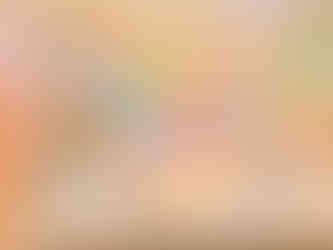











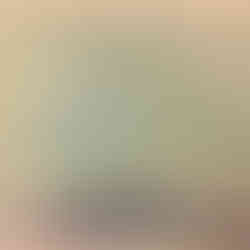


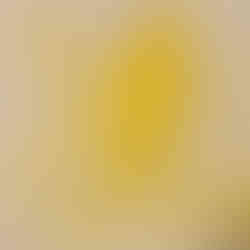

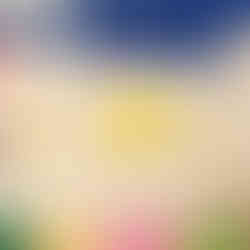




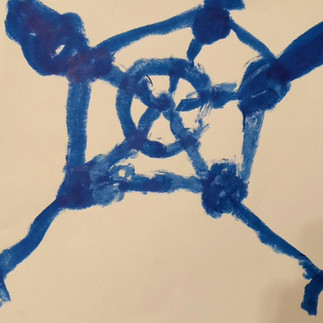
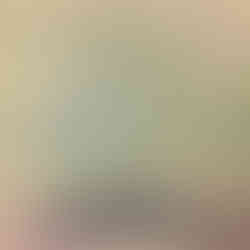

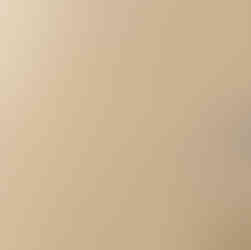





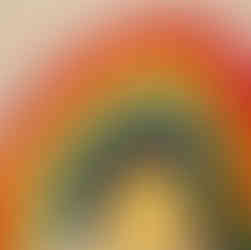






Comments